
12 minute read
EMA ENERGY MANAGEMENT AWARDS 2022 - results
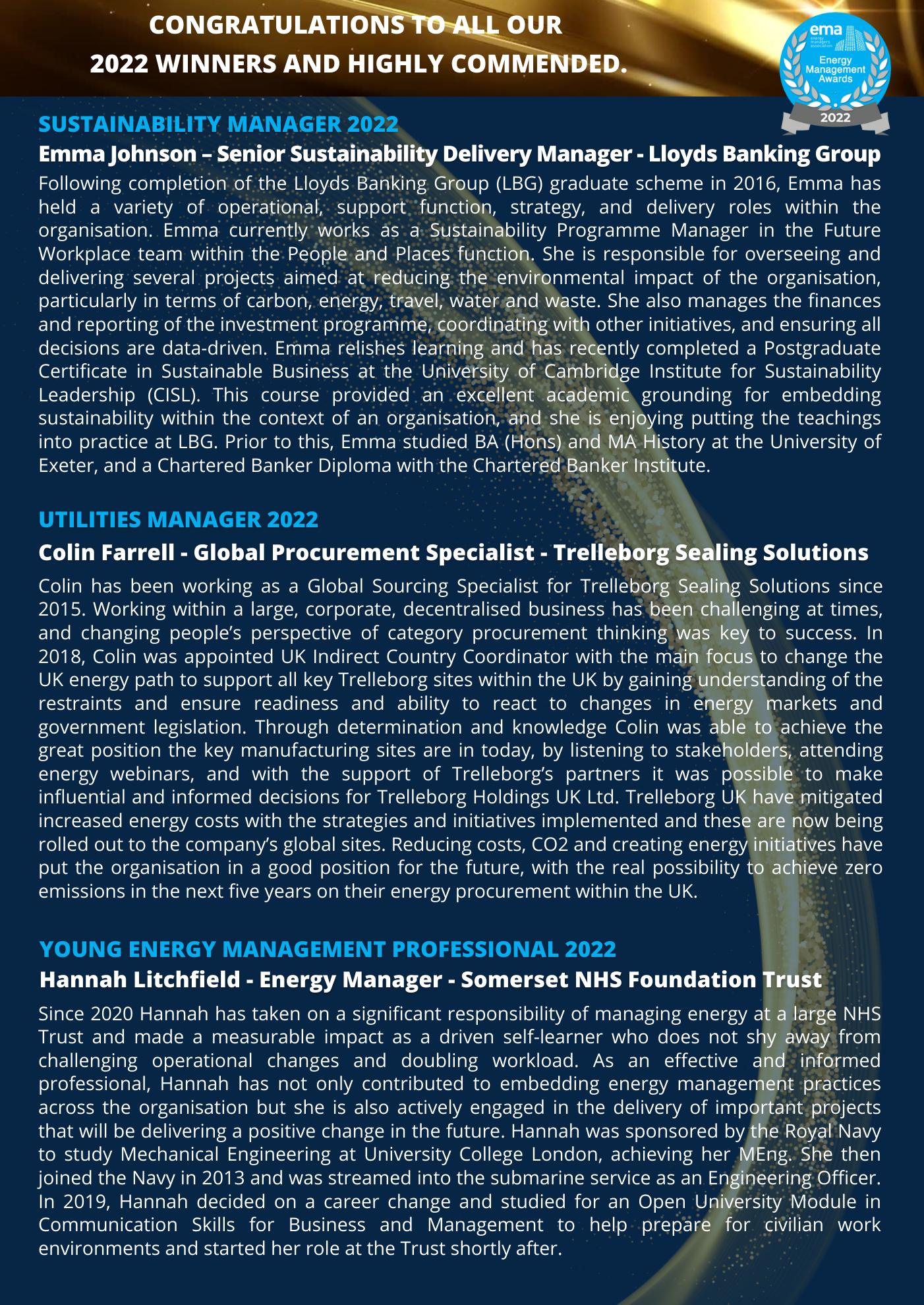

Advertisement
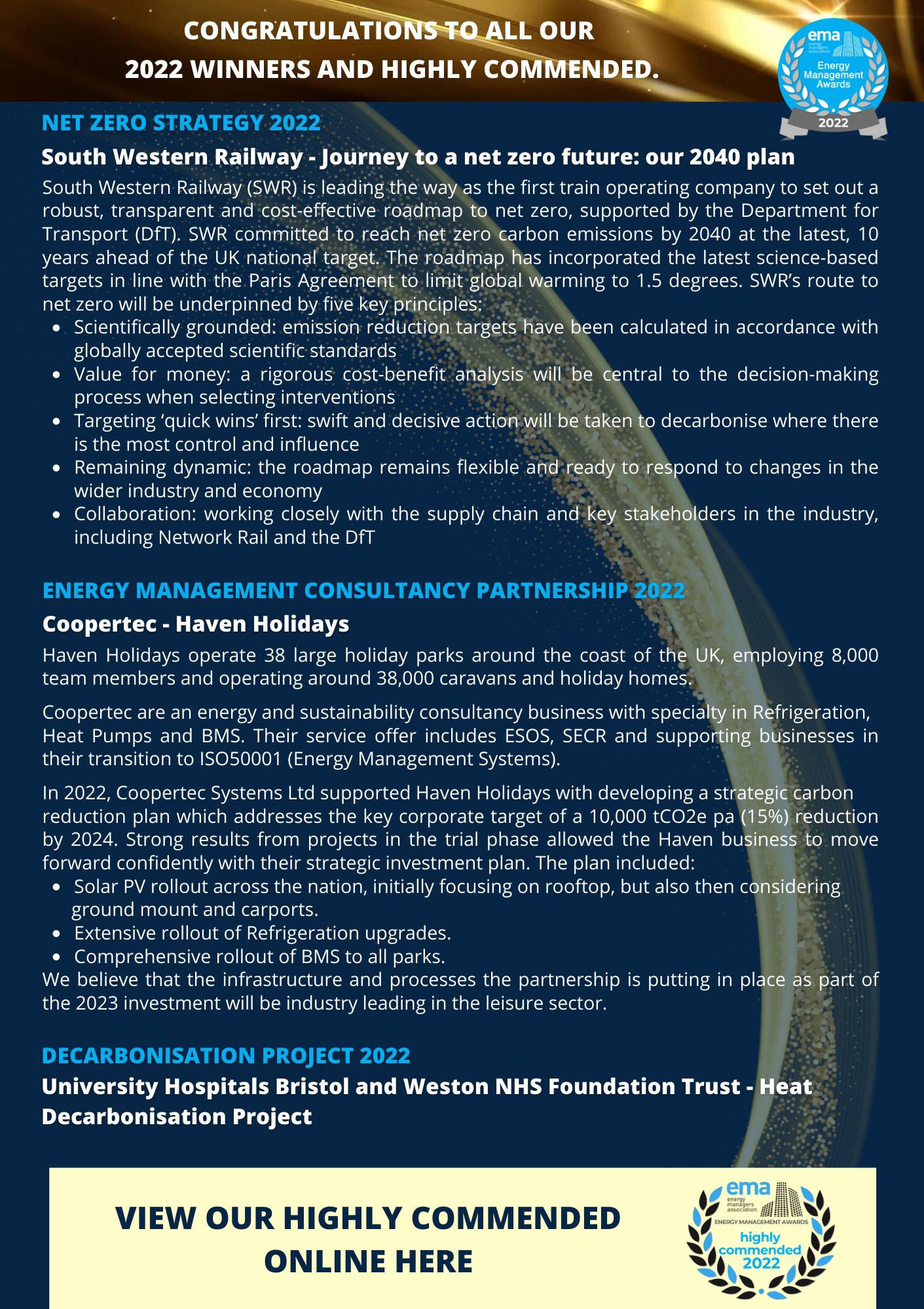
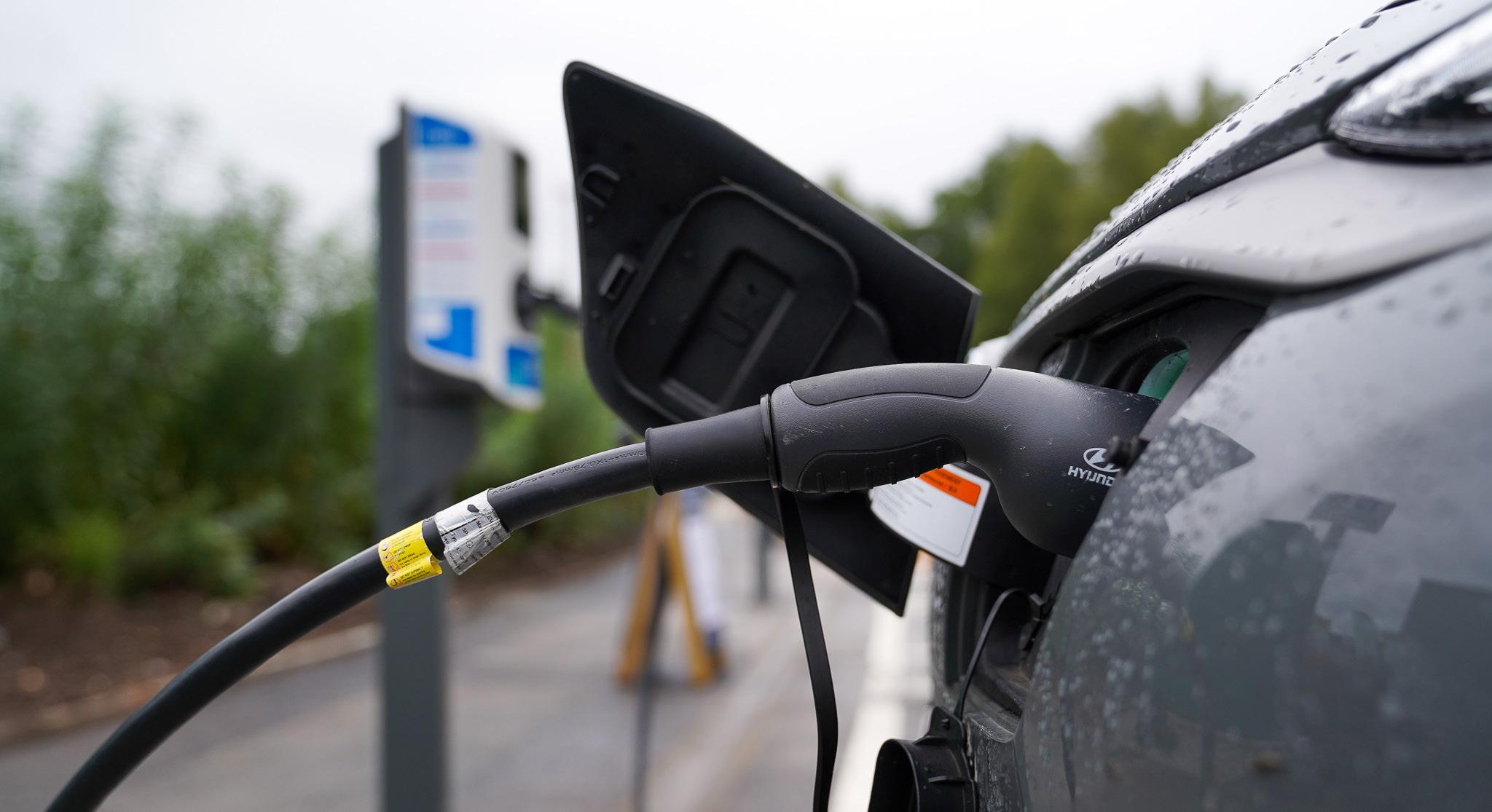
EV charging infrastructure and operation
– a destination perspective from The Eden Project
Background to Eden
Located in the far South West of England, The Eden Project in Cornwall is an iconic example of regeneration and nature recovery, which aims to build relationships between people and planet to demonstrate the power of working together for the benefit of all living things. Now more than 21 years old, the popular attraction is a living theatre of plants and people that welcomes almost 1m visitors a year to explore its mission through education, plants and nature, arts and culture, regenerative sustainability and communities.
Having generated £2.2 billion in economic impact, the organisation is now using its success to expand its mission to new audiences with further sites planned both in the UK and abroad.
Eden Project Cornwall
Being home to more than 300 fulltime employees, our demonstrator site is proof that positive transformation is possible and that by working with nature, rather than against it, we can achieve great things. The site recovers two-thirds of its water demand for irrigation and toilet flushing from ground and rainwater sources, and is in the middle of delivering a groundbreaking deep geothermal energy plant that will provide a plenteous source of on-site renewable heat to be delivered directly to its Rainforest and Mediterranean Biomes.
The site’s energy demand is managed with a highly specialised Building Management System and the organisation promotes a culture of energy and sustainability awareness through its teams and working practices.
Our commitment to being Climate Positive by 2030
Following 10 consecutive years of certification with Planet Mark and achieving consistent reductions in operational carbon, in 2021 we reaffirmed our response to planetary emergency by setting the ambitious commitment of becoming a climate positive organisation by 2030 as part of the United Nations Race to Zero campaign. The level of our ambition in our pathway seeks to not only rapidly reduce all emissions across scopes 1, 2 and 3 but crucially, go beyond net zero to a point where we store away more carbon than we emit.
Our approach is centred around nature recovery – we see the biodiversity and climate crises as being part of the same wider problem rather than separate issues. Ultimately our approach to going beyond net zero seeks to demonstrate the possible to our audiences and inspire them to make changes in their own lives.
The challenge and opportunity
Having calculated our extended scope 3 emissions footprint through a detailed study with Planet Mark (these account for 75 per cent of total emissions), it was clear that tackling emissions from visitor travel would be a key area of focus in delivering our decarbonisation pathway. Despite being served by a regular bus route with onwards connections to St Austell railway station, the rural location of our site
makes for challenging use of public transport (which was especially highlighted during the coronavirus pandemic) and means 95 per cent of our visitors arrive by private car. Despite these challenges, the scale of the opportunity to develop our site into a regional sustainable transport hub that supports rapidly increased demand for electric vehicles (EV) and public transport is significant.
The benefits and case for electrification
To seize the opportunity, we rapidly needed to increase our on-site capacity for EV charging and upgrade the electrical infrastructure needed to support a new EV charging service. As a destination location, our use case for EV charging is somewhat atypical compared with a convenience location and needed to satisfy a number of different users. As well as improved charging facilities for visitors, creating an incentive for greater take up of staff personal vehicles (we offer a salary sacrifice scheme via Octopus EV) was important. Whilst expensive, investing in our site’s electrical infrastructure would also create opportunities for additional revenue streams as well as facilitate future connections to energy generation sources (such as solar canopies) and battery storage. Finally, introducing better charging facilities for our fleet of electric vehicles would also support improved logistics across site with a lower environmental impact from operations.
Transforming our infrastructure
Arguably the largest hurdle to delivering the EV charging hub was completing the required infrastructure upgrades. An indepth electrical study concluded that to meet future demands for electrification of transport and heat as part of the site masterplan, an increase in grid capacity of 2 Megavolt-amperes (MVA) could be needed within five years’ time.
Following an initial request for an additional grid connection with Western Power Distribution, it quickly became apparent that relying on further reinforced grid import connections would quickly become insufficient. In fact, by engaging with the distribution network operator (DNO) early on, we were able to settle on a suitable network design quickly which, rather than relying on an external grid connection, would be predicated on developing our own private high voltage (HV) network in order to support our goal of achieving energy autonomy in the future. Delivering the EV hub was therefore phase one of expanding our private HV network, with the intention that it would incorporate further strategic power hubs over time as demand requires.
Following an eight-week design and due diligence exercise, we completed the installation of a new 1 MVA substation within 12 weeks which now provides power to 10 x 22kw dual alternating current (AC) dwell time appropriate chargers spread across 20 dedicated, wellspaced EV charging bays.
Market evaluation – choosing the right commercial approach
From our market evaluation, it quickly became clear that there was no ‘one size fits all’ approach when contracting for an EV charging service. In fact, the reality emerged to be far from it! In a rapidly expanding market with regular new entrants, for us, it came down to a trade-off between being able to retain operational control of our hub versus the level of capital investment we could stretch to. The three options we considered were broadly as described in the table below. In the end, we settled on option 3 – a hybrid option that allowed us to contract for a fully subcontracted operational and maintenance service but still retain control of rights and revenue for the hub. It also didn’t require us to resource operations and maintenance support ourselves – we had to be realistic about our level of expertise in the EV market!

Although the EV as a service model results in ongoing service and maintenance fees, these are largely offset by the revenue generated from the charging tariff payments. Crucially, our chosen approach keeps our options open for future service development in what is a rapidly evolving market.
EV charging hub in numbers
The EV hub went live in early August 2022, just in time for peak season, and was immediately welcomed by our visitors, delivering 26 charging sessions on the first day and receiving positive feedback on Zap Map since. Our highlights from August and September 2022 data include: • Charging sessions delivered – 652 • Energy delivered – 15,704 kWh • Avg. charge time – 3.5 hours • Avg. energy per charge – 25 kWh • Emissions avoided 1.3 t/CO2e
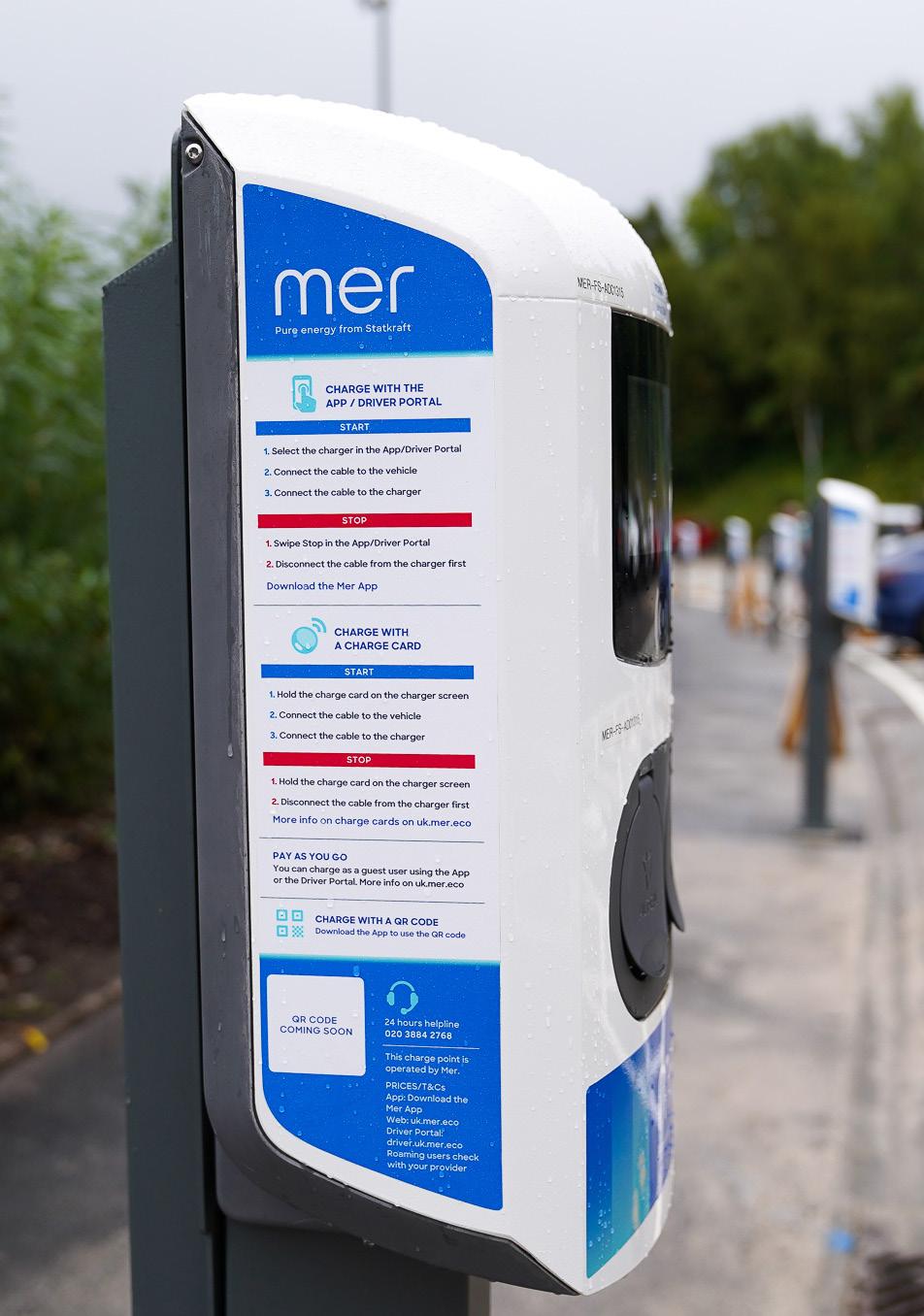
Key considerations – lessons learned so far
We are still learning as we go, refining and evolving our EV service as required, but some of the key lessons we have learnt so far are as follows: • Signage and pre-visitor comms – keep it simple and clear – we want our visitors to enjoy a stress-free stay with us. • Etiquette and overstay policies – think carefully about the behaviours you want to encourage and be prepared to adapt and change your approach when needed. • Consider user policies for staff – we implemented a short policy to ensure fair and responsible use of charging facilities for all staff and fleet users, again making the sort of behaviour we want to encourage clear from the start. • Keep improving user experience – we are still listening, reviewing and adapting! • Technical design – don’t underestimate the practical considerations – an EV hub without sufficient spacing between bays is unlikely to meet accessibility requirements and might not be suitable from a fire and health and safety perspective.
Future plans – what’s next?
The first phase of our electrical infrastructure expansion has successfully enabled demand for EV charging to be met and provided the platform for future growth as demand builds over time, as we anticipate it will. We are finetuning our user experience as much as possible and keeping a close eye on emerging EV usage trends with a view to being able to capitalise on these within our service offering.
We realise it won’t be long before demand for charging outstrips our current capacity and by future-proofing the design of our electrical infrastructure, it may be that we can soon provide a rapid, convenience-style charging solution support with direct current (DC) chargers for both our visitors and regional transport providers alike.
Author’s profile:
Charles Sainsbury is Energy and Sustainability Manager for The Eden Project, responsible for delivering its regenerative sustainability approach both at Eden Project Cornwall and in the design and construction of future Eden Projects. Charles is an Energy Savings Opportunity Scheme (ESOS) lead assessor, accredited with the Energy Managers Association (EMA).
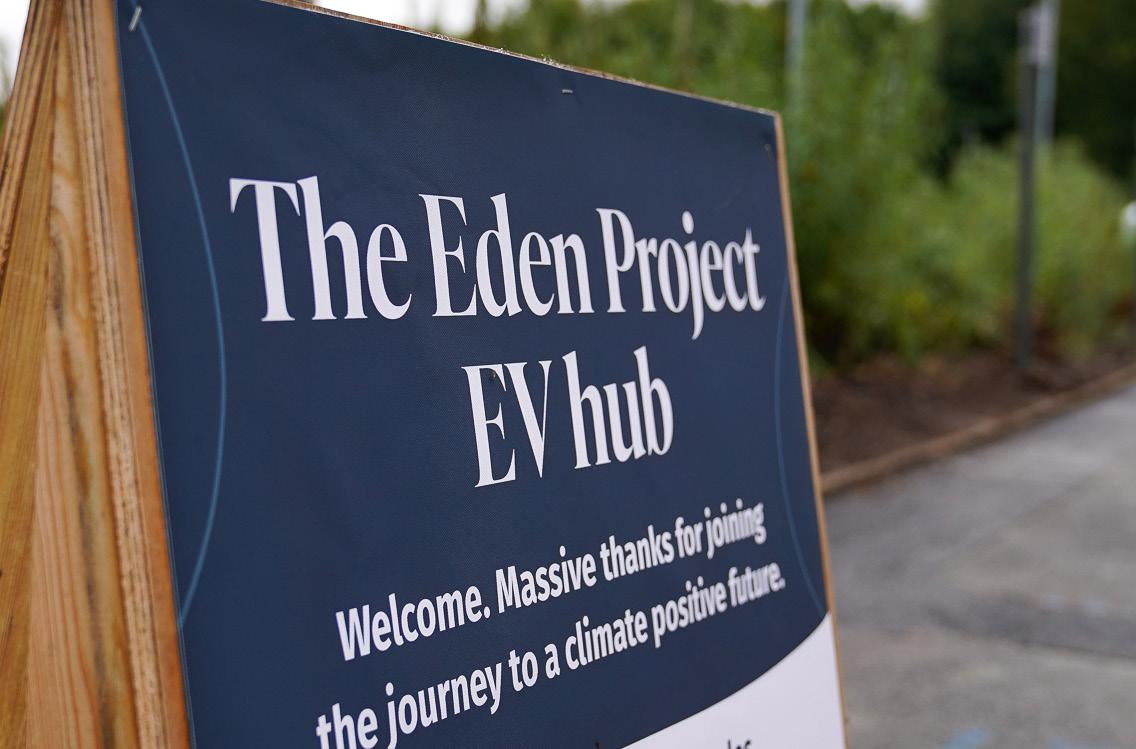
Net Zero & Energy Management

In recent years, the term Net Zero has become somewhat of a buzz word in energy and wider business management, without individuals using the term, fully understanding (or sometimes ignoring) that Net Zero means to reduce all emissions in scope 1 (direct emissions), scope 2 (indirect emissions) and scope 3 (upstream and downstream emissions) to zero; in its purest way, it’s excluding offsets.
The latter is a massive challenge for any organisation to achieve by 2050 to meet the UK Government targets, let alone by 2030, as some large organisations have committed themselves to. Therefore, it’s likely that the scrutiny on organisations that have published these bold ambitions is going to increase and some large multi-nationals have already been criticised for their published Net Zero plans not being credible and, in most cases, relying too much on unspecified offsets to reach Net Zero. I’m a firm believer that a credible Net Zero plan is the foundation to the success of any energy management professional in an organisation to deliver strong business cases for energy efficiency reduction measures, investment in renewable energy generation and other energy management activities (e.g., procurement, behavioural change, etc). A credible Net Zero plan provides clear purpose to the proposed energy management interventions and in return, the delivered energy savings associated with these interventions, provide a clear demonstration of the organisation’s ability (i.e., its competency to deliver) and its dependability to deliver on its Net Zero commitments. The latter combined with being transparent as an organisation, is key to earn the trust of key stakeholders, like investors, regulators, government and the wider community. Current best practice shows that a credible Net Zero plan of an organisation should be publicly available and contain the following key components: • Purpose: Setting specific and
substantiated targets
An organisation should explicitly state whether its publicly stated target covers all three reporting scopes and provide interim targets that support the longer-term vision. These interim targets should have the appropriate level of depth and scope, supported by clear timescales that require immediate actions. These interim targets shouldn’t be longer than 5 years from the time of publication and clearly state whether meeting the targets are dependent on offsets. • Dependability: Tracking and
full disclosure of the organisation’s emissions
An organisation should annually disclose their emissions and progress towards their targets, broken down in the different reporting scopes and clearly outlining whether it uses location based and/or market based accounting methodology to report its emissions (preferably an organisation does both). • Ability: Demonstrating the
reduction of emission measures
To demonstrate the organisation’s ability to deliver its targets, it should provide details of the measures they are taking to reduce its carbon footprint and how it’s following the carbon mitigation hierarchy to ensure that energy consumption is firstly avoided and reduced, before it’s substituted (e.g., by renewables) or even offsets. • Transparency: Reporting
on other relevant climate contributions and offsets
Lastly, an organisation should provide details on the offsetting claims they are making as part of its annual emissions inventory report and any other relevant climate contributions (up and down the value chain) for which the organisation has provided financial contributions, but hasn’t claimed any carbon emission reduction in its annual report. I’m very conscious that many organisations are at different stages in their journey to Net Zero and the level of transparency will vary in accordance to what they feel comfortable with. Therefore, your organisation might not be ready for disclosing all of this information at this stage of your journey. However, as Energy Management professionals we should have this information ready in case customers, investors, shareholders and other stakeholders approach the organisation for this information. Therefore, as a profession we can play a pivotal role in building and maintaining the trust that people have put in organisations to tackle climate change and provide the strong business case internally to take action now. With the significant energy price rises that we have seen in the last 18 months, the case for action is now even stronger. Author’s profile is available here.
ENERGY MANAGEMENT ONLINE TRAINING SCHEDULE
Energy Management Theory Combined with Real-World Applications
DECEMBER
16th Net Zero Fundamentals and Strategies
JANUARY
26 - 27th Fundamentals of Energy Management
FEBRUARY
3rd Become an ESOS Lead Assessor 9-10th Energy Management in Building Services 17th Essential HVAC Control and Optimisation
MARCH
3rd Lighting - Basic Understanding 10th On-site Electricity Generation 16th Turning Data into Energy Savings (in-person) 24th Monitoring, Targeting and Validation 31st Reaching Net Zero
BOOK 2023 COURSES FOR 2022 PRICES
until 31 December 2022
APRIL
21st Water Management 28th Energy Procurement
Group Training
The majority of the courses can be delivered virtually to teams or groups of stakeholders from the same organisation or industry in a standard format, or as tailored sessions (minimum 6 candidates). For a quote email jana.skodlova@theema.org.uk with your chosen course title and approximate number of staff. We can also develop new, bespoke material to fit your specific needs.
Knowledge and Skills Gap Analysis Interview
Understanding of a range of energy management competencies is required for professionals to effectively manage organisation’s energy cost and consumption, monitoring and reporting energy use, as well as meeting energy efficiency requirements. The EMA can assess your knowledge and skills through the Knowledge and Skills Gap Analysis Interview. The Interview is an informal 60-minute conversation that



